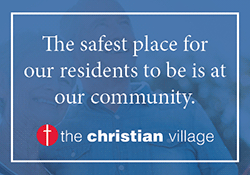State authorizes counties to expand vaccine eligibility early
 Send a link to a friend
Send a link to a friend
[March 27, 2021]
By GRACE BARBIC
Capitol News Illinois
gbarbic@capitolnewsillinois.com
 SPRINGFIELD — Areas of the state may begin
vaccinating those 16 years of age or older earlier than anticipated as
vaccine demand slows under current guidelines and COVID-19
hospitalizations and cases see an uptick. SPRINGFIELD — Areas of the state may begin
vaccinating those 16 years of age or older earlier than anticipated as
vaccine demand slows under current guidelines and COVID-19
hospitalizations and cases see an uptick.
Vaccine eligibility is not set to open statewide until April 12, but in
response to an increase in cases, Gov. JB Pritzker announced that local
health departments seeing low vaccine demand can expand eligibility to
all who are 16 and older. The state also announced the deployment of
five mobile teams to combat a surge in northwest Illinois.
The statewide seven-day rolling case positivity rate was 2.9 percent
Friday, the highest rate since Feb. 15. As of Thursday night, 1,302
patients with COVID-19 were hospitalized, a high since Feb. 26. Of
those, 264 patients were in intensive care unit beds and 120 were
reported to be on ventilators.

Because some areas of the state have already administered first and
second doses to a majority of those eligible under current guidelines,
demand for the vaccine has slowed, the governor’s office said.
“We didn’t want doses sitting around,” Pritzker said at an unrelated
news conference in Chicago Friday. “We’ve got teams that are going to
regions of the state where this is happening and effectuating change so
that we can bring down the numbers.”
The Chicago area is of significant concern as it has seen a daily case
rate increase of nearly 50 percent since last week, along with six days
of increases in test positivity, the Illinois Department of Public
Health said in a news release. Suburban Cook County has also seen its
daily case rate increase more than 40 percent with nine days of
increasing hospital bed usage.
Region 1 in northwest Illinois, which includes Rockford, has seen eight
days of increasing bed usage and six days of increasing test positivity,
according to IDPH.
“This is very concerning to us and makes us pause to evaluate the
numbers,” Pritzker said. “What we want to do most of all is make sure,
is this a blip in the numbers, is this a short surge that will come back
down, or is this something that could have some sustaining features to
it.”
The state remains under Phase 4 restrictions, unable to move toward the
“bridge” phase, which would allow for greater capacity limits for
businesses and social gatherings, because of these early signs of a
possible resurgence in COVID-19 cases.
The state is on track to reach 70 percent of first doses administered to
residents 65 years or older in the coming days, which is one of the
requirements that would trigger the bridge phase. However, increased
COVID-19 hospitalizations are preventing the state from moving forward.
As of Friday, Pritzker said about 67 percent of those 65 years or older
have received at least their first dose of vaccine.
[to top of second column]
|

The graph shows the rolling, 7-day positivity rate
for tests completed starting on June 1. Illinois Department of
Public Health data was used to calculate the averages. (Credit:
Jerry Nowicki of Capitol News Illinois)

Aside from vaccine administration numbers, hospitals must maintain
20 percent or greater intensive care unit bed availability, while
hospital admissions for COVID-like illness and deaths must hold
steady or decline over a 28-day monitoring period in order to
trigger the bridge phase.
IDPH reported Illinois has seen 10 days of increases in the
seven-day rolling average for hospital admissions. The COVID-19 case
positivity rate has increased from 2.1 percent on March 13 to 2.9
percent Friday.
IDPH Director Dr. Ngozi Ezike said it is the state’s goal to get as
many people vaccinated as quickly and safely as possible in hopes of
slowing this increase.
“Recent increase in hospital admissions and test positivity are
concerning new developments and we don’t want to go down the same
path we’ve seen before and experience a resurgence in the pandemic,
which is why Governor Pritzker directed us to use all our resources
to halt these upticks,” Ezike said in a news release. “We cannot
move forward if our metrics are going backward.”
The state is expected to receive nearly 1 million doses of COVID-19
vaccine next week, which IDPH reported as being an all-time high for
vaccine distribution in the state.
While vaccine supply increases, the slow in demand could result in
vaccines going unused, which is another reason why the state is
expanding eligibility earlier than anticipated, based on each
county’s demand.
“Each county is different and local health departments know better
how to vaccinate people in their communities as soon as and as
equitably as possible,” Ezike said.

Communities will continue to receive baseline allocation of doses
and an additional supply of vaccines will be allocated to
high-demand areas where at-risk eligible residents face long waits
for appointments, IDPH reported.
The state also announced it will be deploying rapid response
vaccination teams over the next two weeks to five counties in Region
1 in an effort to quickly administer vaccine doses to combat
increasing cases in these areas.
These teams will be administering the single-shot Johnson & Johnson
vaccine from an additional allocation of vaccines outside of the
local health department supply.
IDPH reported 3,002 new confirmed and probable cases of COVID-19 of
76,774 test results reported Friday, with an additional 33
virus-related deaths.
Capitol News Illinois is a nonprofit, nonpartisan
news service covering state government and distributed to more than
400 newspapers statewide. It is funded primarily by the Illinois
Press Foundation and the Robert R. McCormick Foundation. |